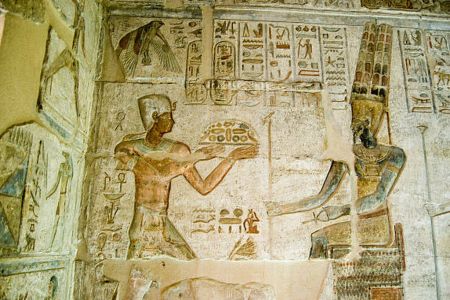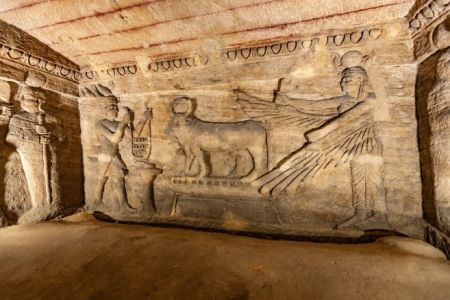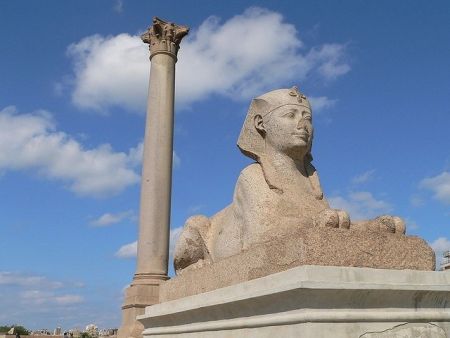the Library of Alexandria

The Legendary Library of Alexandria: The Lost Treasure of Ancient Knowledge
Among the greatest intellectual wonders of the ancient world, the Library of Alexandria stood as a beacon of wisdom, learning, and cultural exchange. Established in the heart of Alexandria City, Egypt’s glittering coastal jewel, this magnificent institution represented the zenith of human curiosity. Scholars from every corner of the known world flocked to its halls, seeking to study philosophy, astronomy, mathematics, and medicine. The Library of Alexandria wasn’t merely a collection of scrolls—it was a living organism of thought, dialogue, and discovery that shaped civilizations and inspired future generations.
The origins of the Library trace back to the reign of Ptolemy I Soter and his successors in the 3rd century BCE. Strategically located near the harbor and close to the Serapeum of Alexandria, it served as a symbol of both political prestige and intellectual ambition. Its mission was simple but grand: to gather all the knowledge of the world under one roof. The ambition was so immense that ships arriving at the port were searched for books and manuscripts, which were copied for the library’s archives. The Library’s story is not just about its glory; it’s also about its mysterious destruction—a tragic end that still fuels historical debates today.
Origins and Vision of the Library of Alexandria
The foundation of the Library of Alexandria coincided with the dawn of the Ptolemaic dynasty, a period when Egypt became a melting pot of Greek, Egyptian, and Near Eastern cultures. Ptolemy I, a former general of Alexander the Great, envisioned Alexandria as a new Athens—an intellectual capital that would rival any Greek city-state. His successor, Ptolemy II Philadelphus, expanded this dream by commissioning the construction of the Museum (Mouseion), a temple dedicated to the Muses, which functioned as a research institute and learning hub.
The Library of Alexandria was more than a storehouse; it was the beating heart of the education in ancient Egypt. The scholars who lived and worked there were supported by royal stipends, provided meals, and enjoyed the privilege of uninterrupted research. Within its marble halls, theoretical physics met poetry, and geometry conversed with metaphysics. The Ptolemaic rulers invested heavily in importing texts, translating foreign works, and encouraging intellectual debate—a practice that turned Alexandria into the epicenter of global knowledge.
Architectural Grandeur and Scope of the Library
Although no tangible remains of the Library survive, ancient accounts suggest that its architecture was breathtaking. Designed with colonnaded halls, lecture spaces, reading rooms, and botanical gardens, it embodied the classical ideals of harmony and beauty. The Library’s collection was said to hold hundreds of thousands of scrolls—some estimates range from 400,000 to 700,000 manuscripts. These included works by Homer, Plato, Aristotle, and countless other Greek, Egyptian, Persian, and Indian thinkers. It’s believed there was also a secondary library within the Serapeum of Alexandria, ensuring that knowledge was preserved across multiple locations.
Scholars and Scientific Breakthroughs
The Library of Alexandria attracted the brightest minds of the ancient world. Among them were Euclid, the father of geometry; Eratosthenes, who calculated the Earth’s circumference with astonishing accuracy; and Hipparchus, a pioneer of trigonometry. Archimedes, though not a resident scholar, exchanged ideas with Alexandrian scientists that influenced his groundbreaking theories. These intellectual giants worked tirelessly, producing revolutionary advancements in astronomy, mathematics, medicine, and philosophy.
One of the Library’s most remarkable accomplishments was the systematic cataloging of works—an early precursor to modern library science. Callimachus, the poet-scholar, compiled the ‘Pinakes,’ an extensive bibliographic index that listed all known works, authors, and subjects stored within the Library. This classification laid the foundation for how libraries organize knowledge today.
The Spirit of Inquiry and Cultural Exchange
The Library wasn’t confined to Greek thought. It became a crossroads for global ideas, hosting translations of Egyptian, Babylonian, Indian, and Hebrew works. The blending of these diverse traditions fostered innovations that transcended cultural boundaries. Alexandria thus became the intellectual link between East and West, a concept that still resonates in the modern world’s pursuit of shared knowledge.
The Tragic Destruction of the Library
The destruction of the Library of Alexandria remains one of history’s most poignant mysteries. Several theories attempt to explain its demise. Some historians attribute the first major loss to Julius Caesar’s fire in 48 BCE when flames spread from burning ships to the docks and nearby buildings. Others believe later attacks—under Emperor Aurelian in the 3rd century CE and during the rise of Christianity—contributed to its final disappearance. The Serapeum, which likely housed the Library’s remaining scrolls, was destroyed in 391 CE by decree of Emperor Theodosius I, marking the symbolic end of ancient knowledge’s greatest sanctuary.
Despite its tragic fate, the Library’s spirit lives on in the modern Bibliotheca Alexandrina, a splendid cultural revival built near the original site. This new institution, a marvel of architecture and technology, aims to recapture the essence of the ancient library by promoting intellectual collaboration and preserving humanity’s shared heritage. Visitors exploring Alexandria Bibliotheca today can sense the whispers of history echoing through its walls.
Influence of the Library on Global Civilization
The legacy of the Library of Alexandria extends far beyond its physical existence. Its influence can be traced in the preservation of classical knowledge, the evolution of scientific thought, and the cross-cultural transmission of philosophy. By collecting texts from Asia, Africa, and Europe, the Library represented the world’s first attempt at universal knowledge. Scholars in later eras—from the Islamic Golden Age to the European Renaissance—benefited from the surviving fragments and translations inspired by the Alexandrian model.
This spirit of enlightenment found echoes across Egypt. From the temples of Karnak Temple and Temple of Philae to the learning centers around the Egyptian Museum of Cairo, the thirst for knowledge that Alexandria ignited still burns in Egypt’s cultural DNA. Modern Egypt continues to honor that tradition through museums, educational institutions, and archaeological research that keeps ancient wisdom alive.
Philosophical and Scientific Contributions
The Library served as a bridge between empirical observation and theoretical reasoning. It was here that Aristarchus proposed a heliocentric model of the solar system centuries before Copernicus. Herophilus of Chalcedon performed anatomical studies that challenged traditional views of medicine. These breakthroughs, documented within the Library’s scrolls, laid the groundwork for modern science. The interdisciplinary atmosphere created a dynamic exchange of ideas—one that mirrored today’s universities and research institutions.
The Library’s Enduring Symbolism
More than a physical structure, the Library of Alexandria symbolizes the eternal human quest for understanding. It stands as a reminder that knowledge, once lost, is irreplaceable. Yet, its story also teaches resilience—an idea reborn with every rediscovery of forgotten texts or archaeological finding. In many ways, the Library’s ashes paved the way for the global academic institutions we now cherish.
Modern Revival: The Bibliotheca Alexandrina
In 2002, Egypt unveiled the Bibliotheca Alexandrina, a breathtaking tribute to the ancient Library. Its design, featuring a massive tilted disc resembling the sun rising over the Mediterranean, reflects both innovation and reverence. Inside, millions of books, digital archives, and research centers honor the ancient dream of universal knowledge. Visitors exploring this modern marvel often combine their experience with tours to the Citadel of Qaitbay or the Montazah Palace, discovering how Alexandria continues to blend history with contemporary allure.
FAQs About the Library of Alexandria
What was the purpose of the Library of Alexandria?
The Library of Alexandria aimed to collect all the world’s knowledge, serving as a center for learning, research, and cultural exchange. It was part of the Museum, which provided scholars with resources, housing, and patronage to advance science, philosophy, and literature.
Who founded the Library of Alexandria?
The Library was likely founded under the reign of Ptolemy I Soter in the early 3rd century BCE and expanded by his son Ptolemy II Philadelphus. Both rulers were inspired by Alexander the Great’s vision of blending Greek and Egyptian culture through intellectual pursuit.
How was the Library of Alexandria destroyed?
Historians believe the Library suffered multiple destructions over time, including fire during Julius Caesar’s invasion in 48 BCE, invasions under Emperor Aurelian, and religious conflicts in the late 4th century CE. Each event contributed to the gradual loss of its invaluable manuscripts.
What kinds of works were stored in the Library?
The Library’s collection included literary masterpieces, scientific treatises, philosophical works, and translations of foreign texts. Writings from Greece, Egypt, Persia, and India were preserved, making it the most comprehensive intellectual repository of its era.
Is there a modern equivalent to the Library of Alexandria?
Yes. The Bibliotheca Alexandrina, inaugurated in 2002 near the site of the ancient library, stands as a modern revival. It serves as a global hub for education, cultural exchange, and digital preservation, continuing the legacy of the ancient Library of Alexandria.









